
Issue 101
May 2013
Pete Irving on failsafe methods to achieve one of MMA’s most sought-after positions.
Gaining the mount is often seen as the Holy Grail of grappling both in and out of the cage, thanks to the control over your opponent the position affords and the number of potential avenues for attack.
Here, we present a masterclass on two classic mounting techniques from side control to help you best your competition.
Knee slide
The classic mistakes when sliding the knee over to the mount is to slide too close to the hips, placing your center over the bottom man’s hips, allowing him to elevate your base; and to allow your far-side underhook to be overhooked by the bottom man, preventing you from basing out. The key to taking the mount correctly is to properly prepare the attack by dominating the side control. Anticipating the bridge and hip escape, then using your grips to prevent the escapes before arriving at the position, is paramount.

1.Pete (top) has Luke under his side control. Pete has his underhook on the far side, preventing Luke from taking the back. Luke is using the near-side arm, keeping it close to his body, to prevent Pete from sliding up and controlling both his arms.

2.Pete draws Luke’s elbow out away from his side and slides his hip under Luke’s arm, switching his base by sliding his bottom leg through.
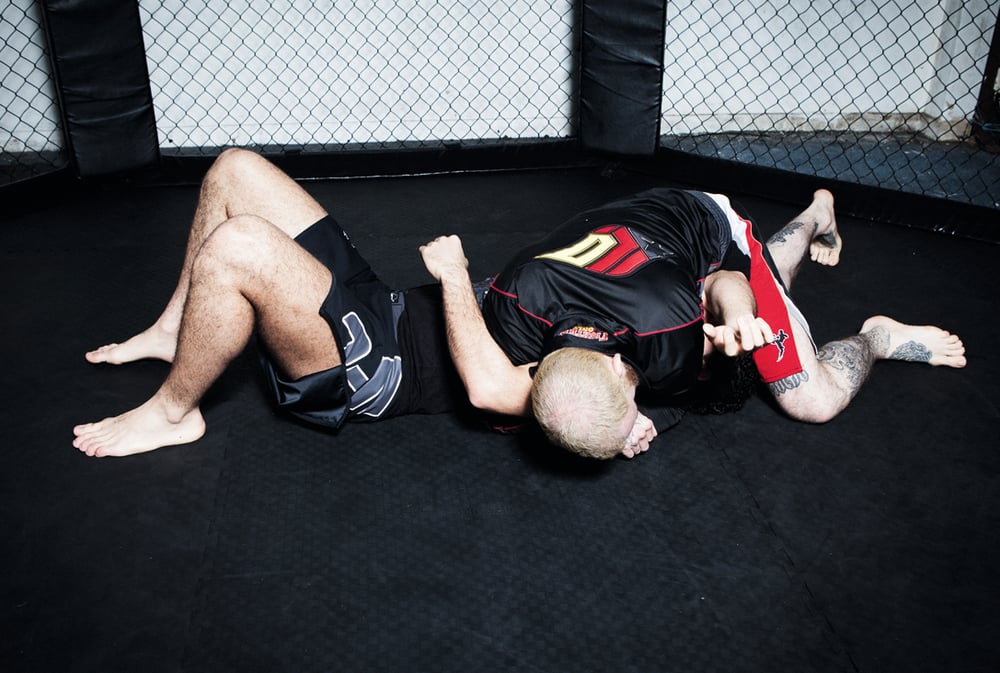
3.Pete switches his base back to hips down, using his hips, and the weight of his legs and back to drive Luke’s arm over his face.

4.Pete slides his shin over Luke’s chest.

5.Pete arrives at the high mount, squeezing his knees together to control the arms.

6.Pete controls Luke’s arm and head by gripping the head and squeezing the shoulder and head together.
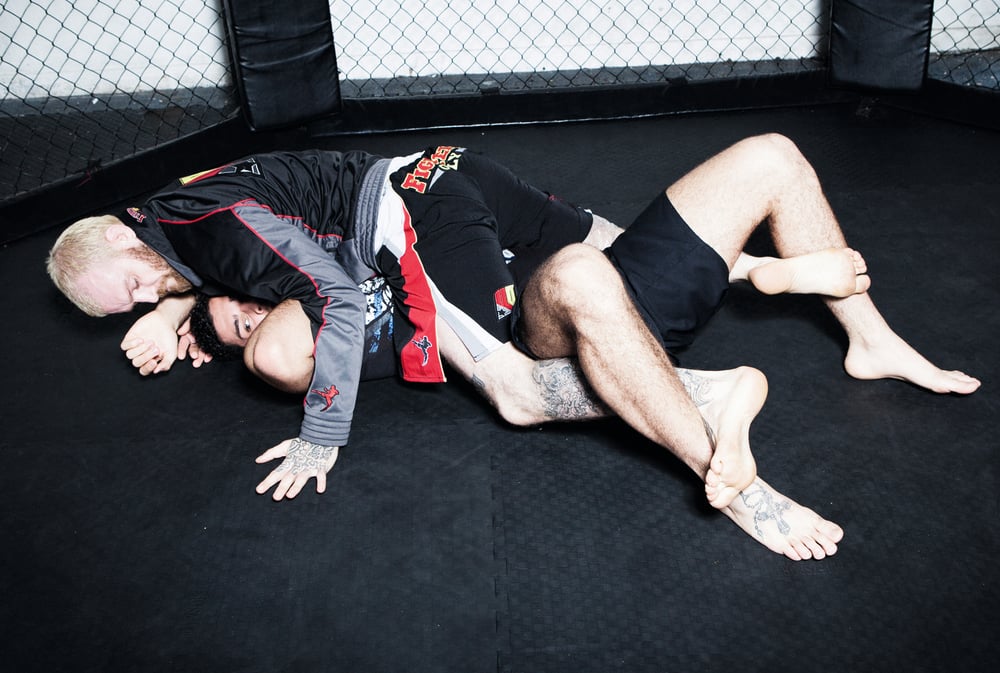
7.Pete applies the ‘grapevines,’ hooking his feet around Luke’s shins, stretching out Luke’s legs, inhibiting his ability to bridge and move his hips.
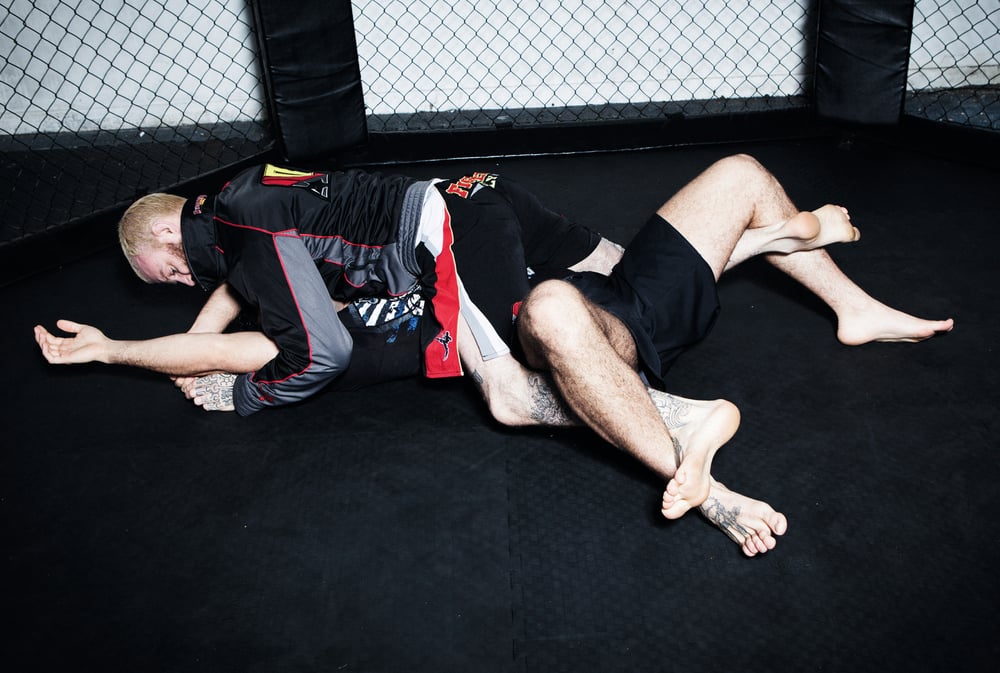
8.Pete brings the near-side arm up above Luke’s head by driving his arm up beneath Luke’s elbow.

9.Pete grips his hands together above Luke’s head, stretching him out and keeping all his weight on Luke’s hips and chest, leaving him unable to bridge or hip escape.
Leg criss-cross
The alternative to beating the arms and attacking high for the mount is to go low, controlling the legs. The key to a successful attack for the mounted position here is to establish good underhooks and immobilize the upper body.
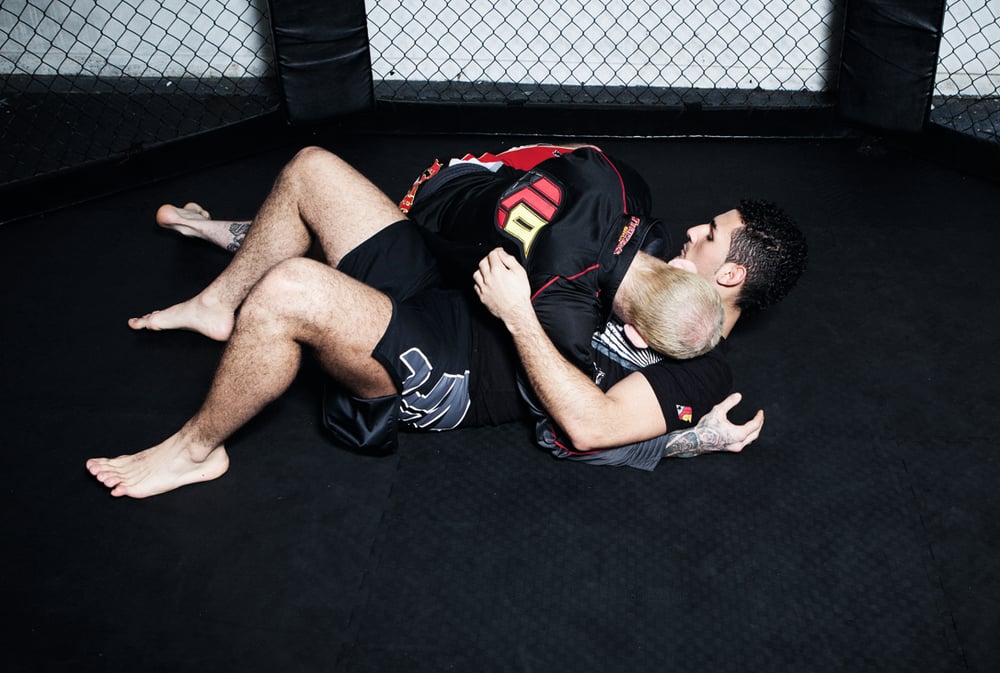
1.Pete has Luke under side control with a far-side underhook.
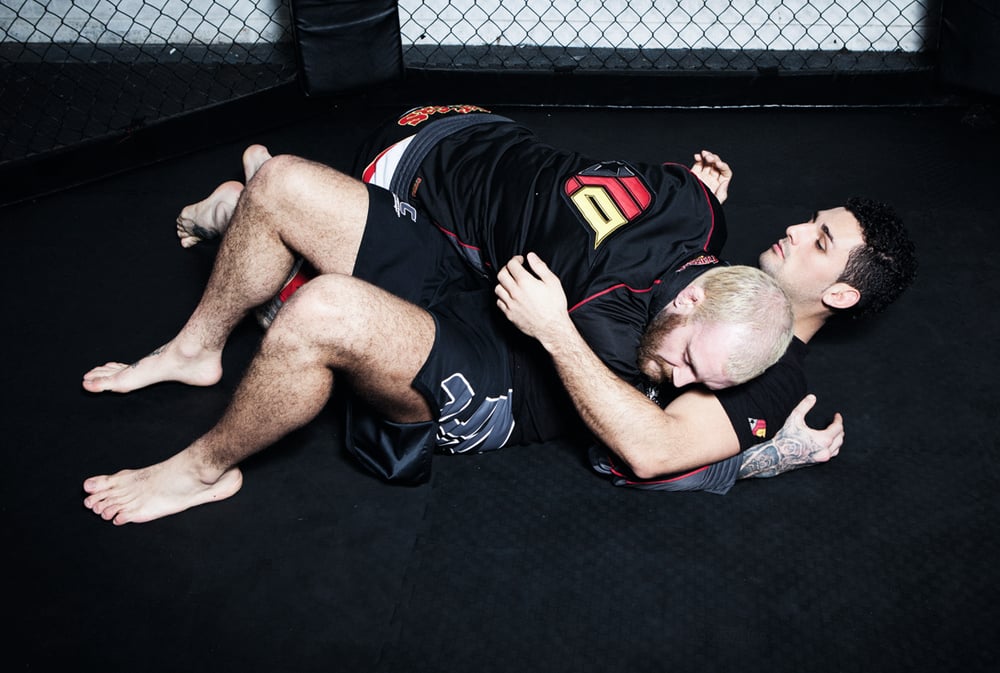
2.Pete feeds in the near-side underhook.
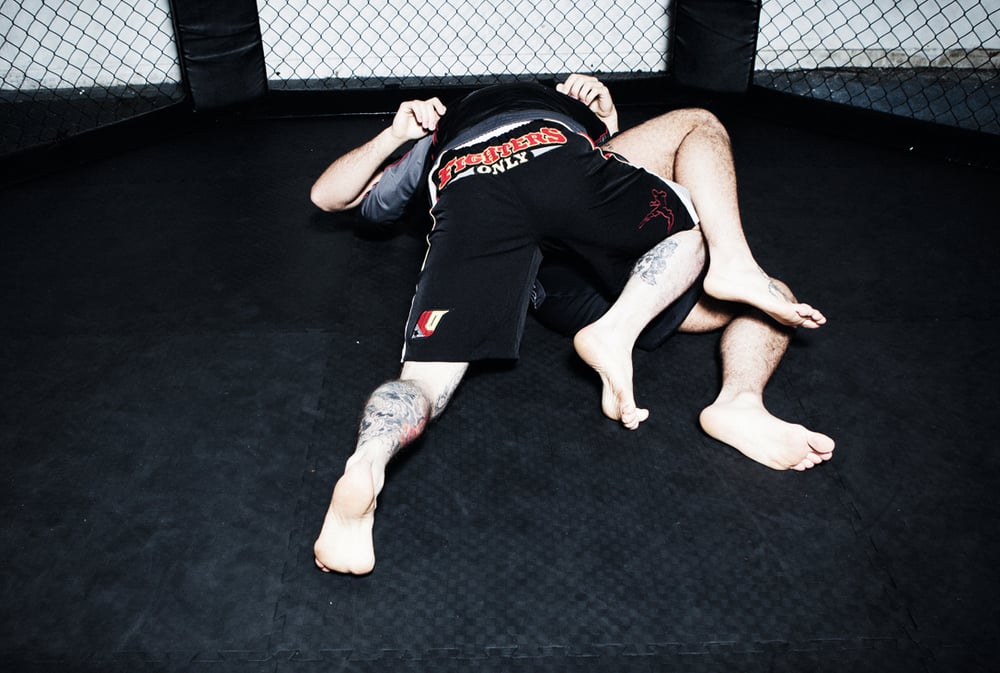
3.Pete nudges Luke’s hips away and starts to slide his knee through.
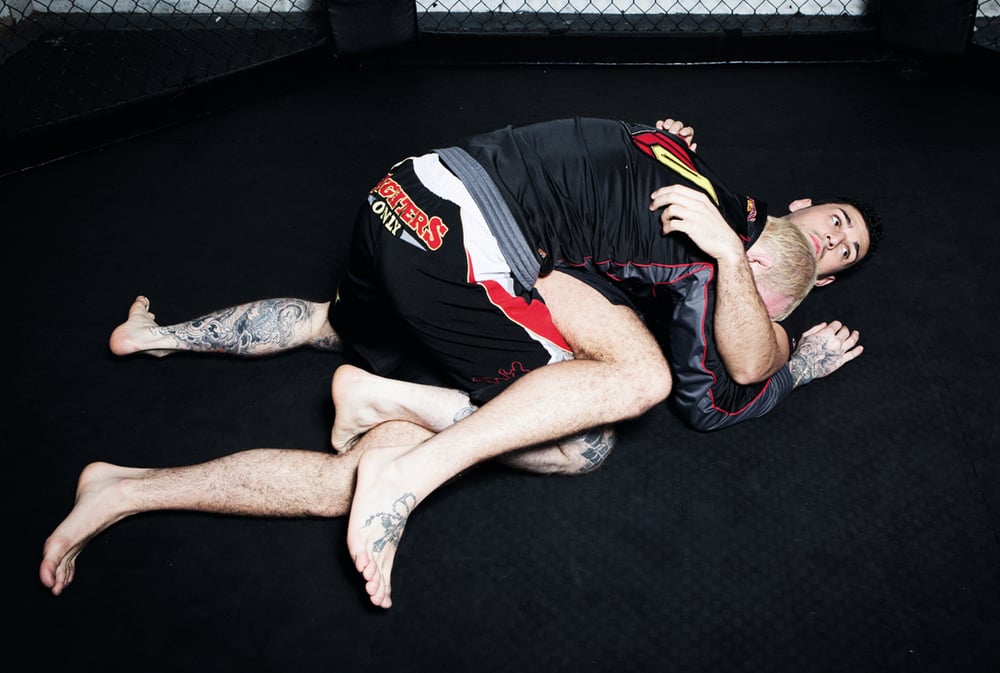
4.Pete drives his knee to the mat, with his shin bearing down on Luke’s bottom leg and folding his top leg over.
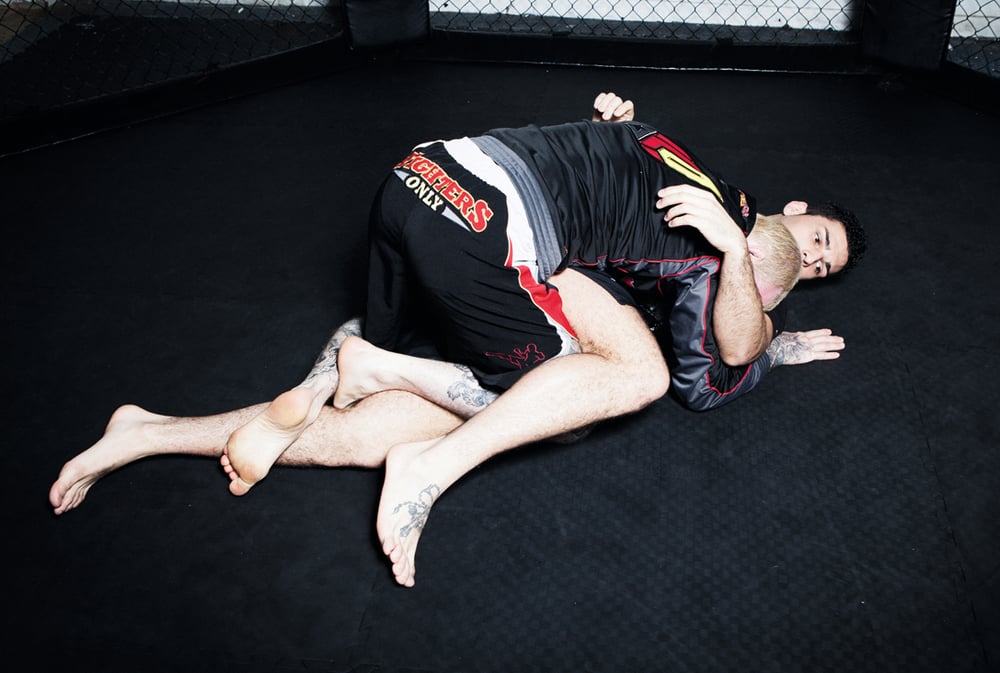
5.Pete traps the bottom leg by placing his left shin across Luke’s calf.
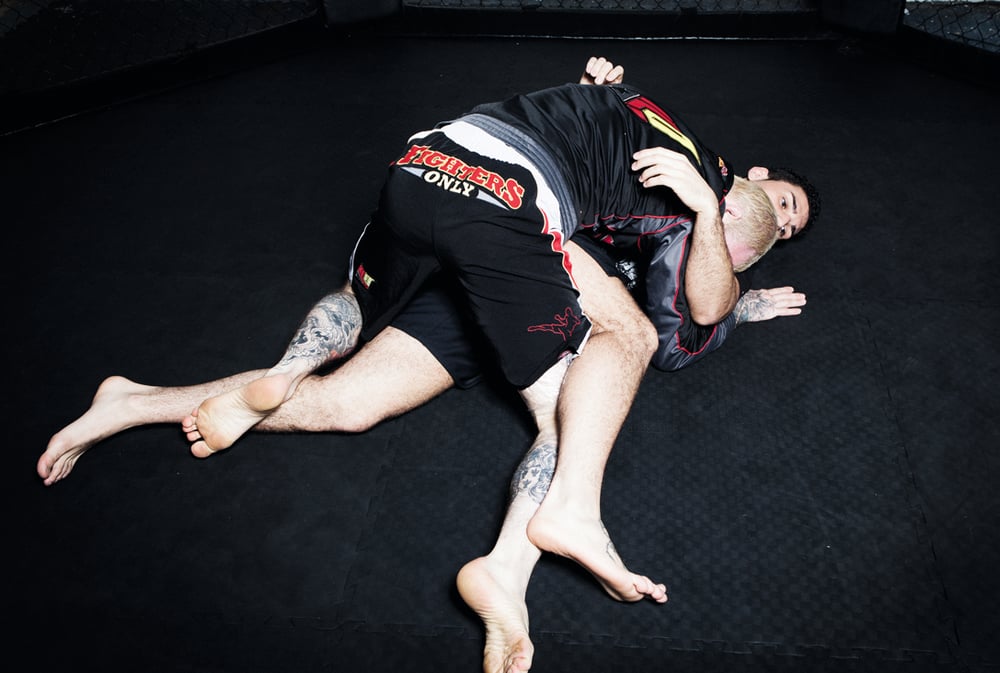
6.Pete slides his leg between Luke’s legs, stretching them apart.
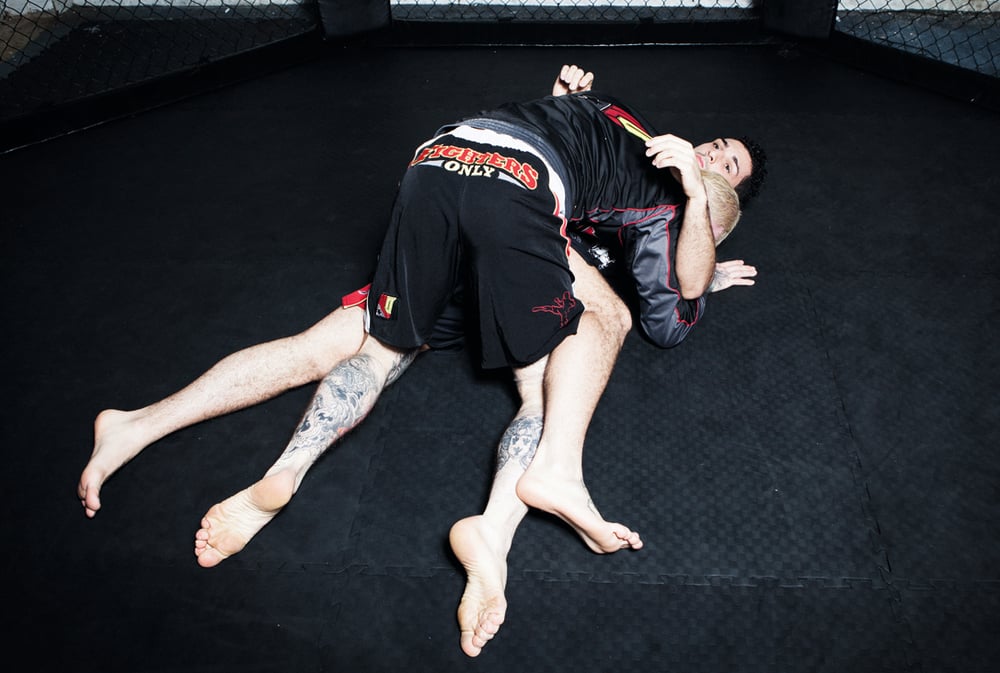
7.Being careful to maintain his underhooks and not allow Luke’s upper body to turn, Pete brings both legs completely between Luke’s legs.

8.Pete slides his right knee over to the outside, keeping his foot on the inside.
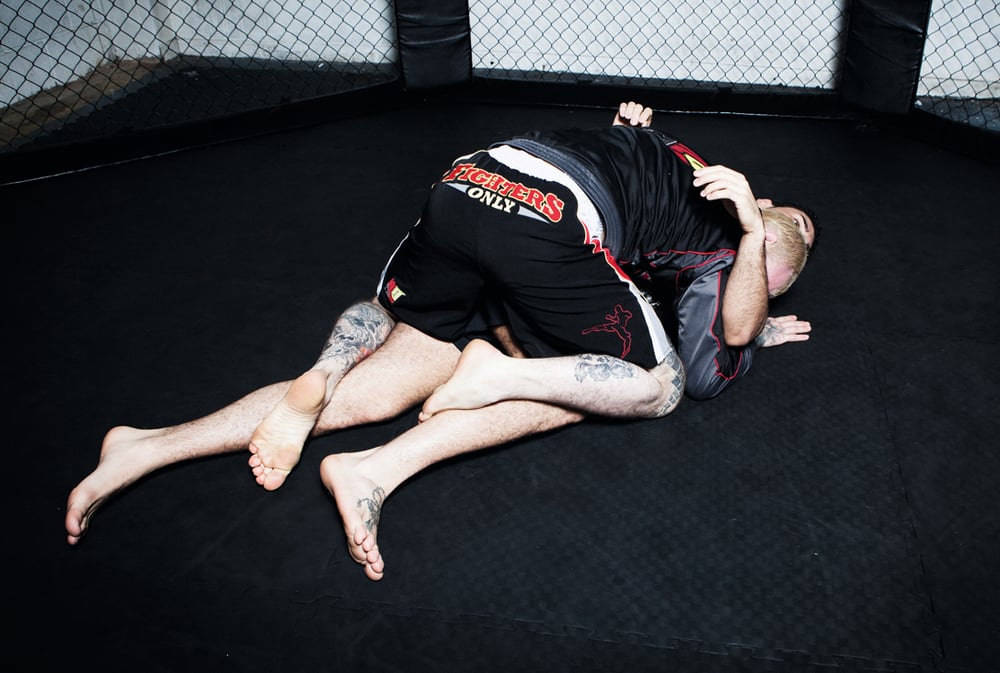
9.Pete slides the left knee back over to the outside, so that both knees are outside and both feet inside.
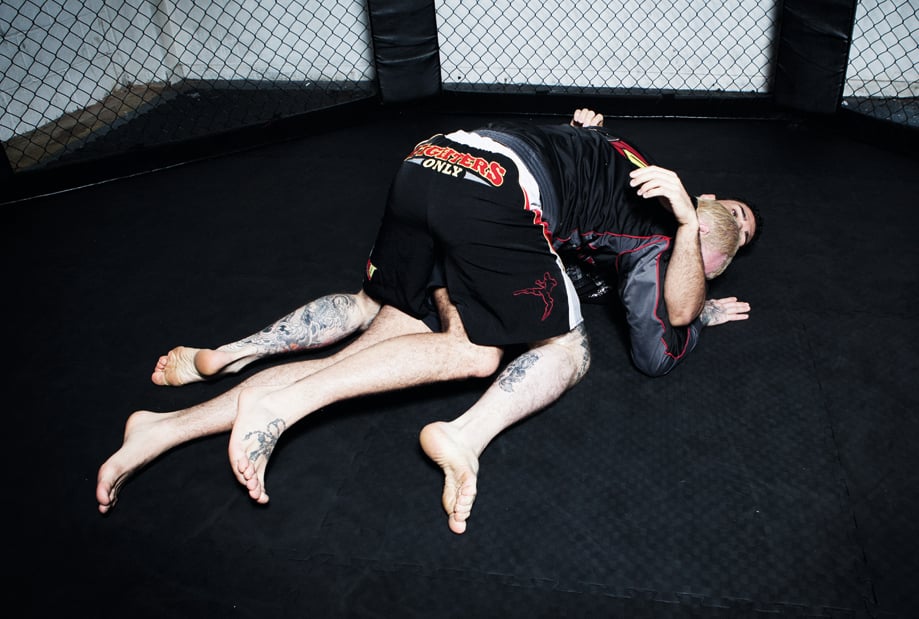
10.Pete allows both feet to slip outside.
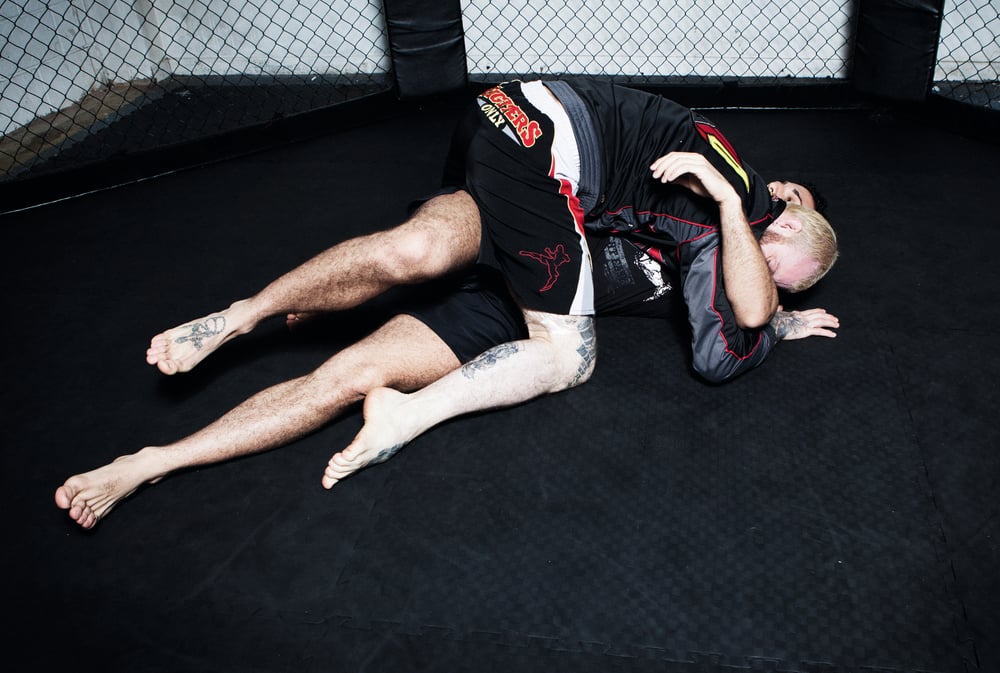
11.Luke now feels he can relieve the discomfort of the twisted hips by straightening out.
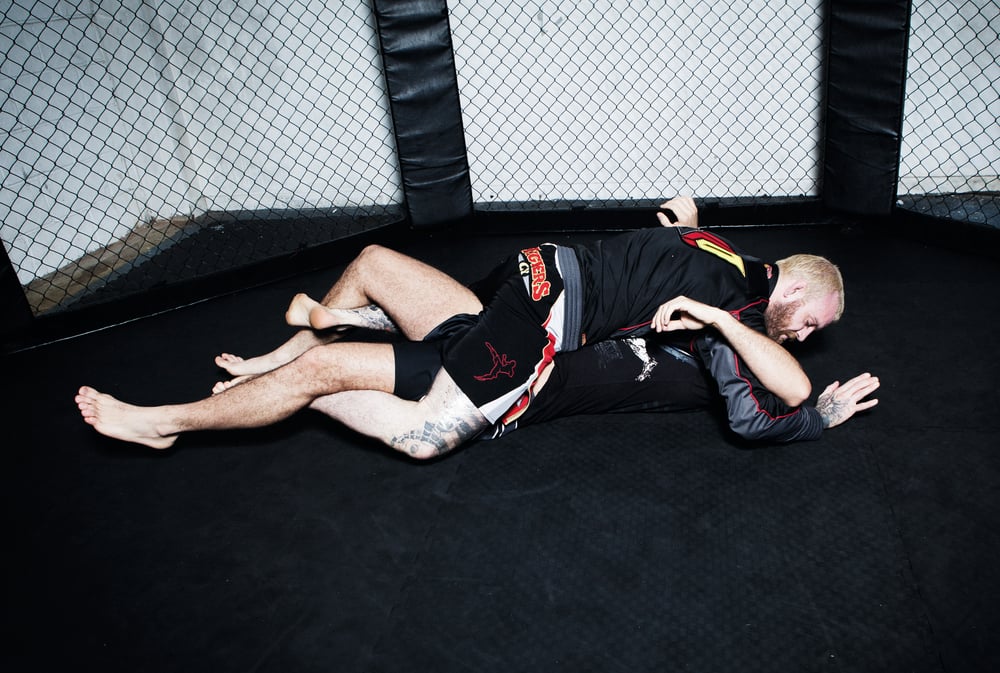
12.As he does so, Pete collects the grapevines, establishing a stable mount.










